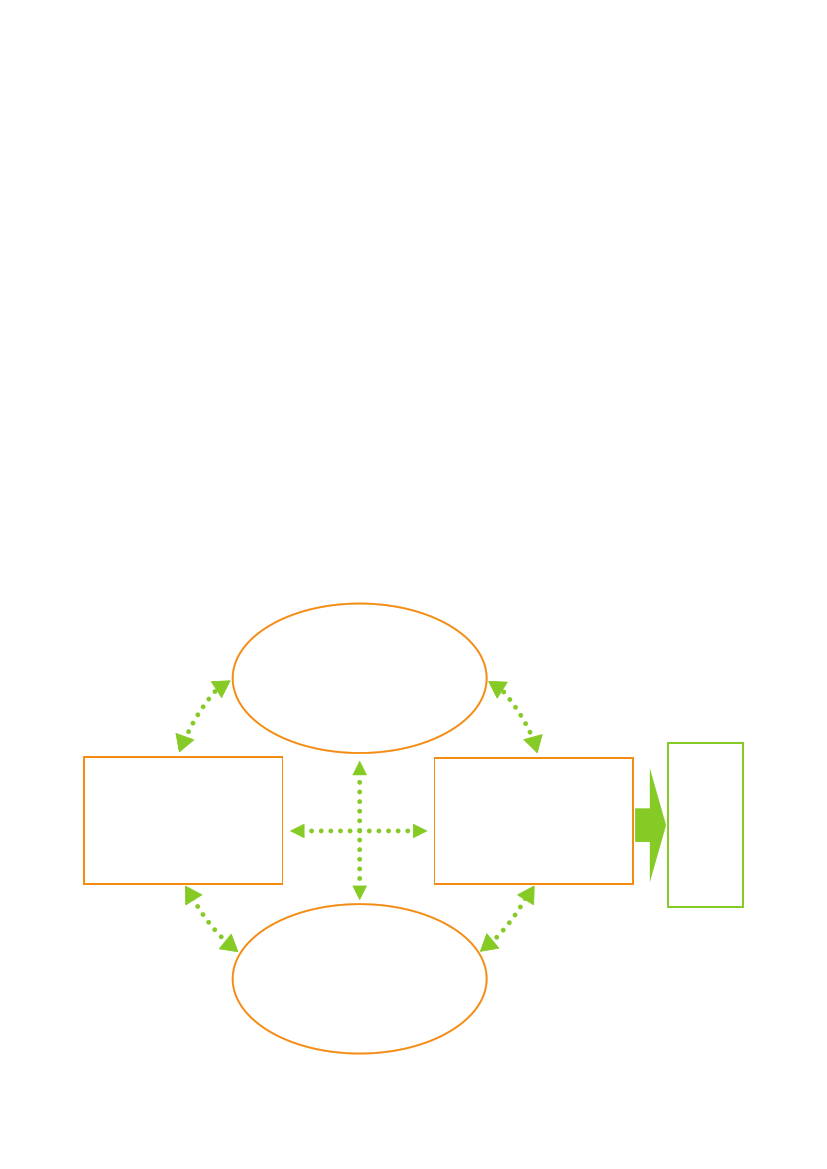
From vulnerability to resilience (V2R)
Poverty, vulnerability, and disasters cannot be viewed in isolation from one another. Uncertainty
about the future is a further characteristic of the lives of the poor, as they are affected by trends,
including climate change, that are often beyond their understanding and influence. Practical Action
has developed a framework to guide work which helps people move from vulnerability to resilience.
This framework (see Figure 3), known as the V2R, draws
on existing approaches to help practitioners and policy
makers to understand, analyse and address the multiple
factors contributing to vulnerability in order to build
community resilience. Resilience here is understood
as not only an ability to cope with and recover from
sudden shocks and seasonal stresses, but also to adapt
to changes brought about by long-terms trends. Even
when affected by trends and sometimes unpredictable
hazards, households and communities must be able to
maintain food security, fully recover their livelihoods and
well-being in a timely manner, and continue to move out
of poverty.
Sustainable livelihoods and disaster risk
reduction
Two interrelated strands of work are central to
building community resilience. Firstly, livelihoods
are strengthened by working through community
organizations and forging links to service providers to
build capacity and voice, and support access to assets,
skills, technologies and markets for enhanced production,
income and security. Secondly, hazards and stresses
are addressed through disaster-preparedness measures
including hazard analysis, prevention, protection, early
warning and contingency planning.
Dealing with future uncertainty
What is innovative about this framework is the dynamic
element of looking at long-term trends and how they
might affect community resilience in the future. Climate
change is a critical trend, but economic policy trends,
environmental degradation, and migration also contribute
to future uncertainty.
Building capacity to deal with future uncertainty
involves:
• Improving local understanding of trends and their
impacts. Hazard analysis should be extended to
take into account the impacts of future trends.
Communities may need support to understand trends,
e.g. why and how climate change is affecting weather
patterns. Local impacts of global trends should also
Future uncertainty
Long term trends including climate change
• Improving understanding of trends & their
local impacts
• Ensuring access to relevant & timely
information
• Building confidence & flexibility to learn &
experiment in order to adapt to uncertainty
Livelihoods
Diversity
• Strengthening community organization &
voice
• Supporting access to & sustainable
management of productive assets
• Promoting access to skills and technologies
• Improving access to markets and employment
• Ensuring secure living conditions
Hazards and stresses
Disaster preparedness
• Building capacity to analyse hazards &
stresses (including climate change impacts)
• Improving hazard prevention & protection
• Increasing early warning & awareness
• Establishing contingency & emergency
planning
Governance environment
• Decentralized & participatory decision
making
• Strengthening links between local, district
& national levels
• Promoting integrated approaches to
livelihoods, disasters & climate change
Resilience
Ability to adapt
to change
Ability to
manage
hazards
Ability to secure
sufficient food
Ability to move
out of poverty
Figure 3. From vulnerability to resilience: the V2R framework
9